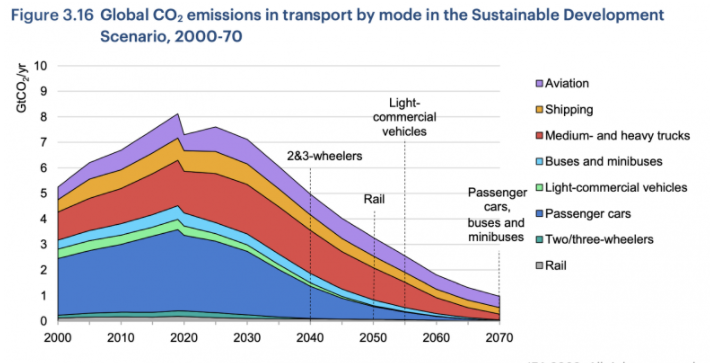
December 2, 2021
SINAI
Decarbonization in the Transportation Sector
With an annual global GHG emission contribution between 15% to 20%, the impact of the transportation sector on global warming cannot be overstated. The rise in temperature which leads to elevated sea levels, flooding, and drought can be devastating not just to marginalized populations but even developed nations as well. Without immediate large-scale changes, emissions from the transport sector are expected to increase further by 60% in 2050.
Thankfully, transport stakeholders, experts, and corporate decision-makers are not taking this lightly. Various public and private institutions are working hand in hand to combat climate change. The Decarbonising Transport initiative, for instance, unites more than 70 governments, corporations, organizations, and institutions to reduce emissions in transport system activities.
Among the strategies that have been devised by multilateral and bilateral efforts, four stand out: the reduction of the total volume of transport activity; the shifting of travel to the most efficient modes, increase in energy efficiency per mode, and the reduction of GHG emissions from the use of each unit of energy. And all these are largely hinged on effectively tracking emissions.

Tracking emissions is the means by which emissions data are collected and measured to assess a source’s performance with respect to set standards. According to the United States Environmental Protection Agency or EPA, based on air regulatory standards, there are two types of tracking or monitoring: Ambient Air Quality monitoring and Stationary Source Emissions monitoring.
Ambient Air Quality monitoring tracks emissions coming from mobile sources, such as automobiles. Throughout their life cycle, cars, buses, and all other kinds of vehicles produce air pollutants from their operations while on the road. Fuel distribution also entails further transportation activities that also need to be tracked for heat-trapping gases.
On the other hand, Stationary Source Emissions monitoring tracks emissions from individual stationary sources, such as power plants, factories, and boilers. In the transportation sector, regulatory bodies need to track emissions coming from fuel production and refining processes, as well as from vehicle manufacturing.
Tracking emissions are indeed critical to the fight against climate change. Here are but a few ways that it has proven itself invaluable to the transport sector.
The International Maritime Organization or IMO is the only transportation body that has adopted energy-efficient measures legally binding in all countries. But to come up with such valid global measures, they first had to establish baselines on the amounts of fuel burned by different types of ships in various cargo capacities. From tracking emissions, they were able to set the basis for tougher track emission standards to further strengthen their Energy Efficiency Design Index or EEDI.
Without robust means to track emissions, governments cannot come up with informed decisions to make critical policies on sustainable mobility. There is no one-size-fits-all. Emissions data down to the local level shall be needed to tailor-fit carbon-reduction strategies relevant to the regions or communities where they will be deployed.
Additionally, many carbon-reduction efforts may require the imposition of restrictions. Global compliance can only be attained with sound evidence as the basis for such restrictions.
To effectively manage climate threats brought about by transport operations, decision-makers need to ascertain which decarbonization activities should be supplemented, modified, or overhauled. Tracking emissions is part of the necessary data set to thoroughly evaluate carbon-reduction game plans critical to the achievement of a net-zero pathway.

Advancements in technology have now enabled transport companies all over the world to grapple with the complexities of tracking emissions.
Climate Trace (“Tracking Real-time Atmospheric Carbon Emissions”) is a hi-tech international initiative that uses AI-powered technology, such as satellite imaging and machine learning to detect CO2 as soon as it is released into the atmosphere. Real-time tracking and simultaneous publication will be a strong impetus for many economic sectors, including the transportation industry, to reshape their carbon-emitting practices and contribute to the fight against climate change. It is hoped that more and more granular tracking of emissions will materialize in the near future, however for the time being, robust carbon accounting via platforms like SINAI remain industry best practice.
Decarbonization platforms, like SINAI Technologies, can help track emissions more accurately and efficiently. For instance, SINAI’s software platform enables more intelligent carbon emission measurement. Its science-based methodologies on scenario-and-sensitivity analysis and risk management can help build capital-efficient strategies for the achievement of carbon-reduction targets. For more information on SINAI Technologies, visit us at www.sinaitechnologies.com today.


